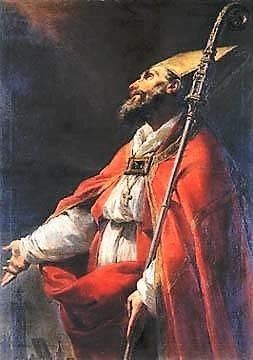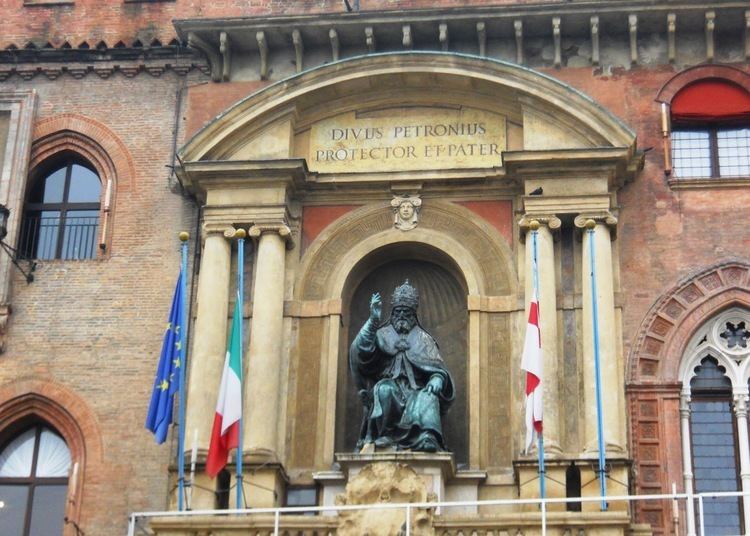Died ca. 450 AD Name Petronius Bologna | Feast October 4 | |
 | ||
Attributes Depicted as a bishop holding a model of Bologna in his hand | ||
Saint Petronius (Italian: San Petronio) (died ca. 450 AD) was bishop of Bologna during the fifth century. He is a patron saint of the city. Born of a noble Roman family, he became a convert to Christianity and subsequently a priest. As bishop of Bologna, he built the Church of Santo Stefano.

Life
The only certain historical information we possess concerning him is derived from a letter written by Bishop Eucherius of Lyon (died 450-455) to Valerianus (in P. L., L, 711 sqq.) and from Gennadius' De viris illustribus, XLI (ed. Czapla, Münster, 1898, p. 94).
Eucherius writes that the holy Bishop Petronius was then renowned in Italy for his virtues. From Gennadius we receive more detailed information: Petronius belonged to a noble family whose members occupied high positions at the imperial Court at Milan and in the provincial administrations at the end of the fourth and the beginning of the fifth centuries.
His father (also named Petronius) was probably prœfectus prœtorio, since a Petronius filled this office in Gaul in 402-408. Eucherius seems to suggest (P. L., L, 719) that the future bishop also held an important secular position.
Even in his youth Petronius devoted himself to the practices of asceticism, and seems to have visited the Holy Places in Jerusalem, perhaps on a pilgrimage.
About 432 he was elected and consecrated Bishop of Bologna, where he erected a church to Saint Stephen (Santo Stefano), the building scheme of which was in imitation of the shrines on Golgotha and over the Holy Sepulchre in Jerusalem.
The buildings belong approximately to the period when Pope Leo I had basilicas erected in Rome and Galla Placidia in Ravenna. Petronius is believed to have written a work on the life of the Egyptian monks (Vitæ patrum Ægypti monachorum); the author of this work, however, is Rufinus of Aquileia.
The treatise De ordinatione episcopi, bearing the name of Petronius as author, is by the elder Petronius, who was a man of eloquence and wide acquaintance with the secular sciences.
Morin has published a sermon entitled "In die ordinationis vel Natale episcopi" (Revue bénédictine, 1897, 3 sq.), which Gennadius ascribes to Bishop Petronius of Verona, whom Czalpa holds is Petronius of Bologna, but this assignment is not certain.
According to Gennadius, Petronius died during the reign of Emperor Theodosius II and Valentinian III, i. e., before 450.
In the twelfth century appeared a legendary life of the saint, whose relics were discovered in 1141. Shortly afterwards a church was erected in his honour at Bologna; a second, planned on a large seal, was begun in 1390 (see San Petronio Basilica). The feast of St. Petronius is celebrated on 4 October.
In iconography, he is depicted as a bishop holding a model of Bologna in his hand.
